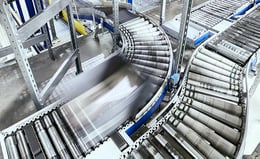4 Myths About Machine and Resource Scheduling
Nick Ostdick - November 15, 2016

.jpg?width=320&name=4%20Myths%20About%20Machine%20and%20Resource%20Scheduling%20(2).jpg)
In any business, the right proportion of personnel and resources are critical drivers in fostering productivity, efficiency, and success in both the short and long-term. Companies must have the right people in the right positions with access to the right tools in order to ensure tasks are completed effectively, on-schedule, and with a high-degree of accuracy and quality. Shortcomings or misallocations in either personnel or resources can spell disaster for companies, particularly those competing in variant-rich industries on a large, global scale.
Much the same can be said for OEMs in the automotive supply chain especially when it comes to allocating machines and resources within a given hub for planned production programs. Planners and managers must leverage a finely-tuned strategy of available machines and resources in order to create effective short and mid-term planning platforms. Such platforms are then critical in ensuring on-time delivery, combating potential bottlenecks or breakdowns, and fostering robust, efficient production programs with the visibility and agility necessary in today’s ever-evolving supply stream.
Principles like machine and resource scheduling - along with intelligent, integrated planning solutions like job shop scheduling - provide planners and managers with the insights necessary to properly assign production programs based on a number of defined parameters, restraints, and rules.
But machine and resource scheduling (M&RS) is not often taken into account by a number of OEMs as a core element of effective demand planning - even though it’s a conception based on creating stability and consistency throughout the supply network. As a result, myths abound about just how critical M&RS can be in engineering high-levels of efficiency and productivity across the entire value chain. With this in mind, here are 4 myths about M&RS and the facts behind these misconceptions.
Myth #1: M&RS is a rigid supply and production principle that does not allow for variances or alterations based on the changing parameters of production programs.
Incorrect. In fact, the goal of M&RS is the optimization of short and mid-term planning through the optimization of orders as they move through an often complex production environment. Rules, restraints, part availabilities, and production facility capacities can be altered at any point during planned production programs and often take place with very little notice or advanced warning. However, M&RS provides planners with a concrete path for efficient, accurate planning via: the creation of orders; the mapping of the associated machine, employee, material, and tool-structure; and the optimization of workflows for each job. This insight then allows for accurate forecasting of when customer orders can be filled and, which orders, if any may need modification to meet delivery schedules and avoid disruptions. This creates planning stability and allows OEMs to operate a more lean supply network based on efficiency and cost-effect production.
Myth #2: M&RS does little to reduce the complexity of today’s variant-rich automotive supply stream.
Quite the opposite. Because M&RS is a lean production and supply principle built largely on providing greater visibility into an OEM’s overall supply and production situation, planners and managers have the potential to achieve great insight into the stability and wherewithal of their production programs. In addition, deploying M&RS with an integrated planning solution like job shop scheduling providing planners with real-time reporting and data alerts, error messages, and other notifications in modifications to rules and restraints in production programs is critical to on-time delivery and maintaining manufacturing schedules. Such real-time notifications foster more informed production decisions for increased value and productivity.
Myth #3: The real value of M&RS lies in the ability to create stable long-term planning platforms for planned programs.
Not quite. While it’s true M&RS is about the creation of stable production programs where the right people, resources, and machines are in play at the right time, M&RS is most valuable for companies in the short and mid-term planning process. The enhanced visibility M&RS provides planners allows for OEMs to utilize detailed ‘what-if’ scenarios to compare different job allocation scenarios based on actual orders or customer inquiries to make informed, productivity-based decisions on how jobs should be allocated and the resources necessary to complete those jobs.
Myth #4: The main function of M&RS is that of operational or internal tasks as opposed to customer-facing outcomes or those that directly impact customer relations.
False. Though much of the value proposition surrounding M&RS does fall squarely on the allocation of resources and efficient coordination of production programs across a network of production facilities, these factors ultimately have an impact on how well an OEM can fill orders, maintain established delivery windows, and serve customers. In addition, leveraging M&RS principles with an integrated job planning solution allows customer inquiries to be created in the system just like real orders and scheduled on a real resource structure with the given workload. As such, it’s much simpler to determine when the customer can be supplied, which already scheduled orders need to be altered, or which bottleneck resources need to be extended in order to deliver the products on-time and in the proper condition.
As you can see, it’s not terribly difficult to see the facts behind the myths about M&RS and just why OEMs should deploy a M&RS strategy to create more efficient, productive production programs. Companies who push beyond the myths will not only be much more competitive in today’s global supply stream, but they’ll also be poised for greater understanding about their supply situation and the potential advantages and challenges therein.
LATEST POSTS
- Understand Circular Economy in The Manufacturing Industry
- How Can Industry 4.0 IT Integration Be Achieved Smoothly?
- The Significance of Order Sequencing in Discrete Manufacturing
- How to improve your Supply Chain Management: The Power of Control Towers
- Optimizing Human Resource Scheduling in Manufacturing: A Technological Approach



